VERTEBRIS
stenosis
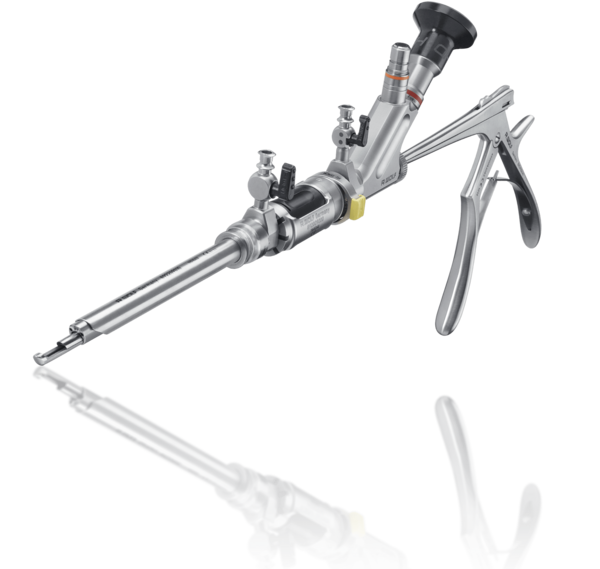
- Unparalleled precision and control
universal motor system and a diverse selection of rigid and articulated burrs.
- Enhanced capabilities
larger telescopes, wider channels, and robust instruments enable extensive bone and ligament resection.
Precision & Control
Versatile Motor System
Extended Resection Power
Unparalleled precision
The Central Stenosis instrument set represents a true milestone of innovation and advancement in spine endoscopy. A larger telescope with a correspondingly larger intra-endoscope working channel and larger, stronger instruments were necessary for the more extensive bone and ligament resection necessitated in this operation. The VERTEBRIS stenosis instrument set is complemented by the universal motor system and a variety of rigid and articulated burrs.
Techniques
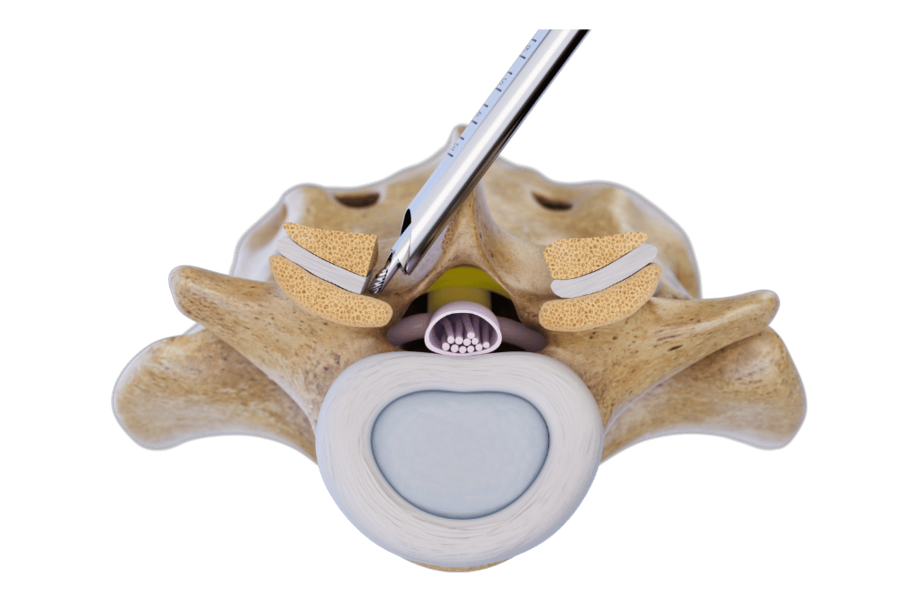
Over-the-top technique
Contralateral decompression
Discover the advantages of contralateral decompression for bilateral central stenosis. Explore the "over-the-top" technique and its potential for improved patient outcomes.
More information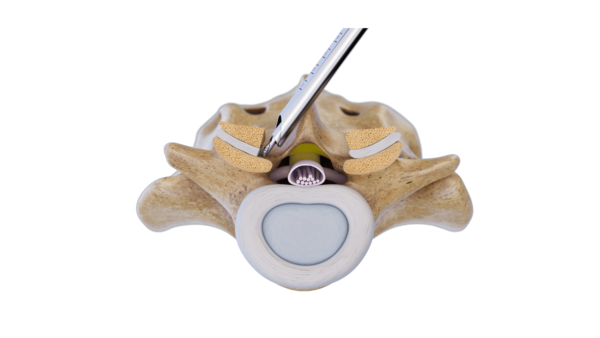
Contralateral decompression over-the-top technique
Contralateral decompression for bilateral central stenosis involves an "over-the-top" technique. A unilateral approach is employed, starting with ventral resection of the spinous process to access the contralateral side. Laminotomy and partial facetectomy are performed before fully resecting the ligamentum flavum. Care is taken to avoid excessive retraction of neural structures to minimize neurological damage.
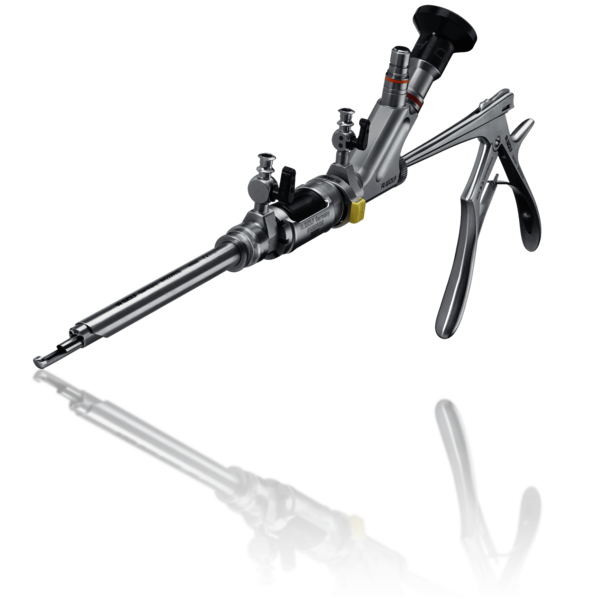
Why VERTEBRIS stenosis?
High resolution 4K endoscopes with shorter working length and increased irrigation rate for full-endoscopic interlaminar approach stenosis surgery.
Endoscope adapter to control the distance between endoscope and working sleeve for more ergonomic operation.
Optimized ratio of large working channel (5.6 mm) to outside diameter (10.5 mm) for least invasive access trauma and highly effective operation.
Fluid management optimized by engineered dimensioning of inflow and outflow preventing neural compression by high pressures of the irrigation fluid.
Working Sleeves with atraumatic distal design to protect neural structures.
Stable grasping forceps and punches with overload protection and shorter working length for interlaminar approach.
Large diameter (5.5 mm) bone punches and Kerrison punches for rapid and precise manual bone removal.
Endoscopic high-speed drill system with a variety of large diameter reusable and disposable burrs for mechanical bone resection of laminae and facet.
TipControl instruments for 4 MHz radiofrequency coagulation and ablation, and hollow tip RF probes for large scale tissue coagulation and ablation.
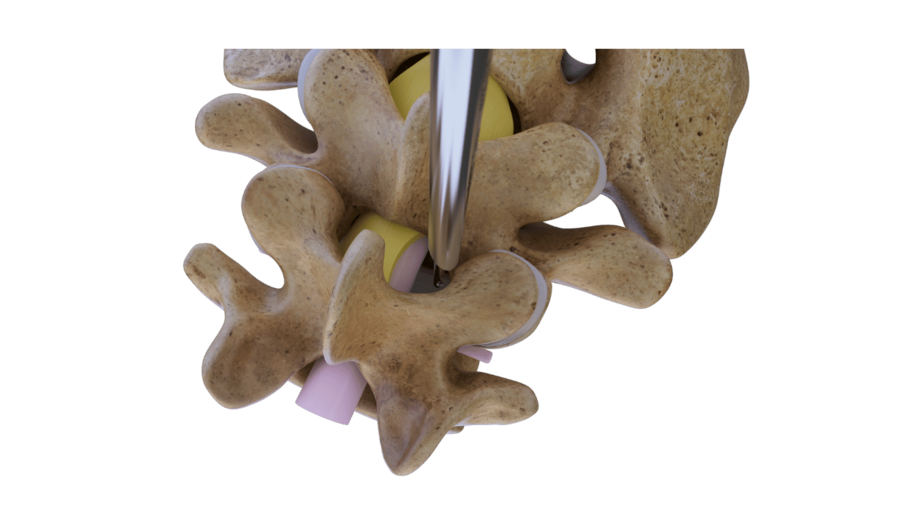
On one side
Ipsilateral decompression
Ipsilateral decompression involves a meticulous approach to remove bone and ligament, ensuring thorough neural decompression. Learn more about this effective technique for treating spinal stenosis.
More information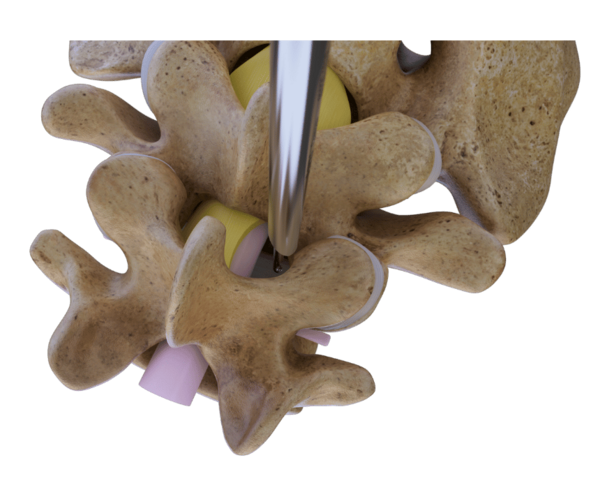
Ipsilateral decompression on one side
Ipsilateral decompression begins with exposure of the bony structures and continues with resection of the descending facet, lamina, and ligamentum flavum. In the case of central stenosis, the procedure extends to the midline.
Neural decompression must be ensured cranially, caudally, and laterally. In some cases, a ventral epidural annulus or osteophytes may need to be checked and removed if symptomatic.
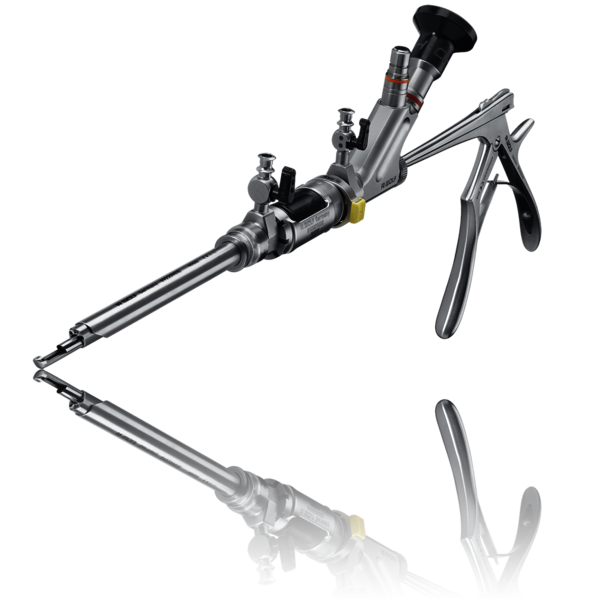
Why VERTEBRIS stenosis?
High resolution 4K endoscopes with shorter working length and increased irrigation rate for full-endoscopic interlaminar approach stenosis surgery.
Endoscope adapter to control the distance between endoscope and working sleeve for more ergonomic operation.
Optimized ratio of large working channel (5.6 mm) to outside diameter (10.5 mm) for least invasive access trauma and highly effective operation.
Fluid management optimized by engineered dimensioning of inflow and outflow preventing neural compression by high pressures of the irrigation fluid.
Working Sleeves with atraumatic distal design to protect neural structures.
Stable grasping forceps and punches with overload protection and shorter working length for interlaminar approach.
Large diameter (5.5 mm) bone punches and Kerrison punches for rapid and precise manual bone removal.
Endoscopic high-speed drill system with a variety of large diameter reusable and disposable burrs for mechanical bone resection of laminae and facet.
TipControl instruments for 4 MHz radiofrequency coagulation and ablation, and hollow tip RF probes for large scale tissue coagulation and ablation.
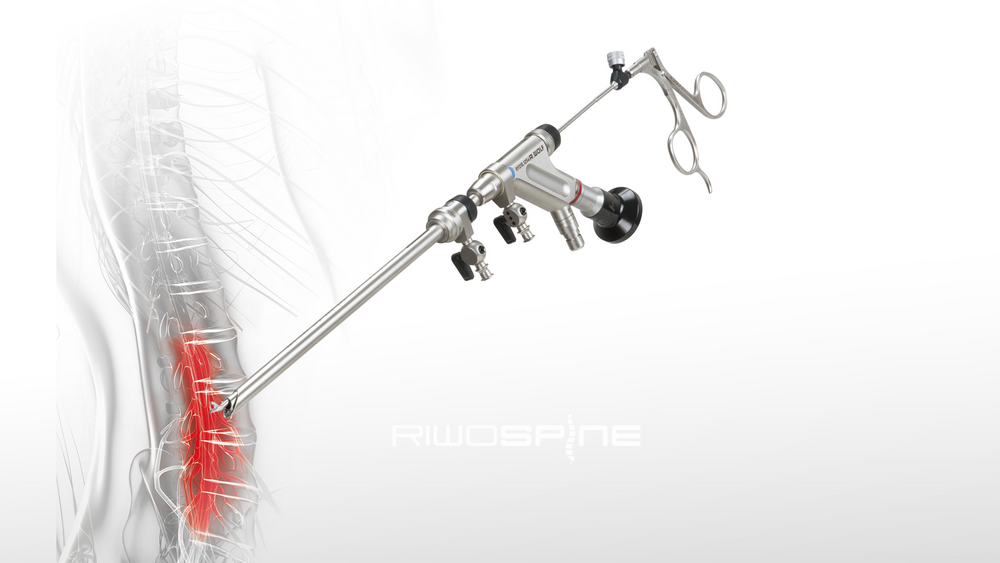
Unparalleled preision and minimal invasiveness
Interlaminar technique
Our advanced VERTEBRIS interlaminar technique ensures precise, minimally invasive spinal surgery. Discover the benefits of advanced technology and expertise in spinal care.
Note: This video contains medical images and scenes containing blood, which may be disturbing to some viewers.
Note acknowledgedHigh-quality products
See matching systems
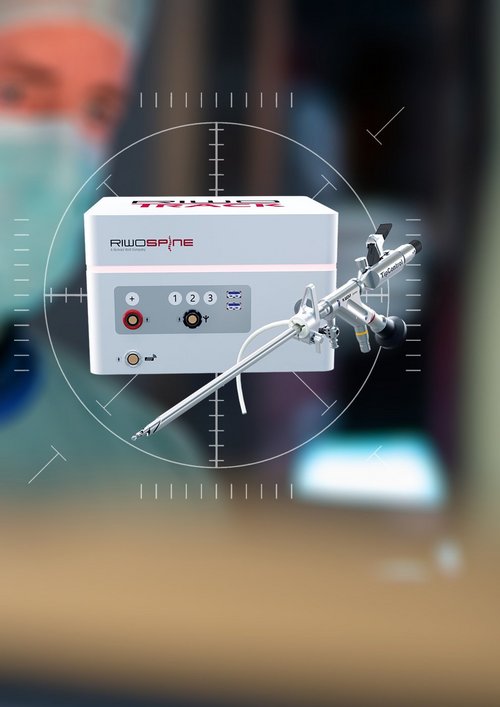
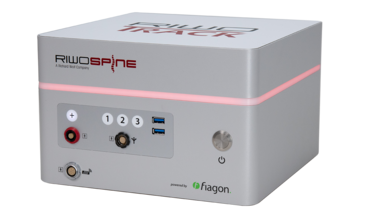
RIWOtrack
tracking system
Simplify your endoscopic instrument guidance at the spine with RIWOtrack electromagnetic navigation.
More information

VERTEBRIS
cervical
Two specialized instrument sets, designed for anterior and posterior approaches.
More information